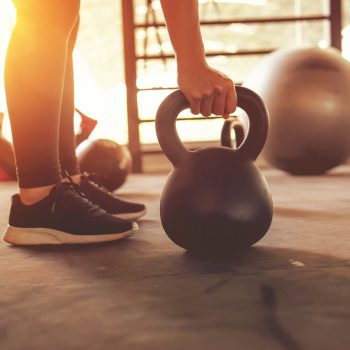The price of having sculpted muscles, when you don’t just rely on training and perseverance, can be high in terms of health. Although used to treat specific pathological conditions, anabolic steroids, synthesized male hormones, have several types of side effects on athletes who use them. But how exactly do these substances work? We talk about this topic with Dr. Maria Fazio, Head of Pharmacy at Humanitas.
What are steroids?
We must not confuse anabolic steroids with corticosteroids. The former can also be used to build muscles. Corticosteroids, on the other hand, are used to dampen hyperactive immune responses and reduce swelling. Anabolic steroids abused by athletes are the synthetic version of testosterone. Both men and women naturally produce testosterone, but like all hormones, which regulate the body’s basic functions, its balancing can have far-reaching consequences.
Why do doctors prescribe steroids?
Doctors may prescribe anabolic steroids for the treatment of certain pathological conditions, such as loss of muscle tone observed in patients with AIDS. Steroids may also be used to treat delayed puberty or loss of testicular function. A physician is never authorized to prescribe steroids to increase athletic performance.
Are steroids illegal?
Without a prescription and a real need arising from pathology, it is against the law to own, sell or distribute anabolic steroids.
In the United States under federal law, the mere possession of anabolic steroids can lead to up to one year in prison and a fine of $1,000 – For steroid trafficking however the maximum penalty is five years imprisonment and a fine of $250,000.
Side effects
These synthesized hormones affect the whole body. Men who take them may: develop their breasts, have painful erections and shrinking of the testicles, have a decrease in sperm count until they become sterile or impotent. For women the side effects are the possibility of having an uncontrolled growth of hair on the face and body, the lowering of the tone of voice, irregular menstruation, an enlargement of the clitoris and a shrinking of the breast and, if they are pregnant, a masculinization of the fetus if it is female.
Both sexes may instead encounter acne, a scalp and oily skin, jaundice (yellowing of the skin), baldness, tendon rupture, heart problems, mood swings, high cholesterol, episodes of uncontrolled anger and develop a significant risk of liver disease.
Steroids are very often taken by injection, which is why there is also a risk of becoming infected with HIV or hepatitis.
The list of the World Anti-Doping Agency
“The World Anti-Doping Agency (WADA) has published a list of prohibited substances (the latest updated list came into force on 1 January 2016), which lists the anabolic substances banned at sporting events and competitions – added Dr. Fazio – In addition, the Ministry of Health has provided tables on the list of substances and medical practices banned for doping, which specify the substances banned in competitions, out of competition and for particular sports.
The recent update of the Official Pharmacopoeia has included these substances in Table 5 and confirmed that the prescription of anabolic agents is subject to the presentation of a medical prescription to be renewed each time and to be withdrawn by the pharmacist.
The exception is nandrolone, which is subject to a special prescription by a doctor. Depending on the molecule required, only a few specialists are entitled to prescribe (e.g. testosterone prescribed by hospitals or specialists: endocrinologist, urologist, andrologist).
In the three-year period 2002-2004, the first Ministerial Decree of 15 October 2002, implementing Law 376/2000, approved the “list of substances prohibited for doping”. This list was updated each time by various amending Ministerial Decrees (30 December 2002, 10 July 2003 and 16 January 2004).
The subsequent annual review draws practical legitimacy from the fact that the WADA (World Anti-Doping Agency) updates each year, starting in 2004 (after the first Italian lists), the list to which the Italian one refers. Starting from the Ministerial Decree of 13 April 2005, therefore, the list of substances and medical practices, the use of which is prohibited for doping, is updated every year, replacing the previous Ministerial Decree on the subject.
Read the text of the Ministerial Decree of 16 April 2018 – Revision of the list of medicines, biologically or pharmacologically active substances and medical practices, the use of which is considered doping, pursuant to Law 376 of 14 December 2000.
For more information you can consult here










